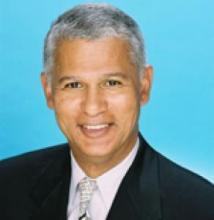Too Many Questions Raised By Dual-Eligible Project

Federal and state officials released their long-anticipated memorandum of understanding implementing a three-year effort to lower costs and improve the coordination of medical care provided to nearly 500,000 California seniors who are enrolled in both Medicare and Medi-Cal.
A version of the program, called Cal MediConnect, will begin in Los Angeles County in October as well, though passive enrollment will not begin until January 1, 2014. Until then, dual-eligible beneficiaries may elect to enroll in the program that will be capped at 200,000 participants.
For the first six months, the memorandum requires MMC plans to allow enrollees to keep their current medical authorizations and to stay with their current caregivers for their Medicare-supported services. This requirement is extended to 12 months for their Medi-Cal services.
The decision to not include a six-month enrollee lock-in period along with the enrollee opt-out-anytime option championed by federal officials undermines the program’s stability. More critical are the yet-to-be-disclosed capitation payments to be provided to the MMC plans by the feds for Medicare and by the state for Medi-Cal. Experience with a similar program – Seniors and Persons with Disabilities on Medi-Cal – suggests that state officials may underfund the Medi-Cal component.
Though it may be difficult to do politically, the MMC plans serving the eight counties could refuse to participate if inadequate premium support and overly burdensome rules are forthcoming. From an MMC plan perspective, the combination of the rules in the MOU and low capitation payments may justify refusal.
Moreover, the following demographics about plan enrollees are worrisome:
- One-in-two dual-eligible beneficiaries are cognitively/mentally impaired, compared to one-in-four of the other Medicare beneficiaries.
- One-in-two dual eligibles are in fair-to-poor health, compared to slightly more than one-in-five of the other Medicare beneficiaries.
- Slightly less than half the dual eligibles are non-elderly disabled, which is nearly four times the proportion of the other Medicare beneficiaries.
- One-in-two dual eligibles have less than a high school education, compared to one-in-five of the other Medicare beneficiaries.
- Lastly, 15% of the dual eligibles are long-term care residents, compared to just 2% of the other Medicare beneficiaries.
These demographics help explain why the dual eligibles representing only 16% of the Medicare population and 18% of the Medicaid population account for 24% and 46%, respectively, of the total expenditures for these programs. The motive of federal and state officials appears to move the dual eligibles into less costly, more efficient coordinated care programs.
California’s local Medi-Cal managed care plans to which the care for the dual eligibles will be entrusted have limited experience with these high-resource consuming beneficiaries. The pressure to cut and control costs will short change the beneficiaries, their caregivers, or both, if state and federal officials do not provide the MMC plans with adequate funding and the time needed to build the right types of networks and care management protocols to manage this medically complex population.
A group of thought leaders I conferred with about my concerns suggested that final approval by the feds for this plan should come with independent monitors who have Office of Inspector General-like federal powers to oversee the three-year project. Paid for by the feds, the objective of this oversight feature is to ensure that course corrections are made as serious problems occur and before any frail elderly patients get lost in the system, causing them to get sicker or die.
Jim Lott is the executive vice president of the Hospital Association of Southern California.






